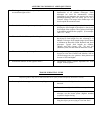
1. Arrange the telescope so that the telescope body is horizontal to the floor (latitude of 0°). Loosen the
Right Ascension Lock (21). The telescope should now turn freely about the polar axis. Rotate the telescope
about the polar axis so that the Counterweight Shaft (7) is parallel to the ground (horizontal).
2. Loosen the Counterweight Lock Screw (located on the counterweight), and slide the Counterweight (6) along
the shaft until the telescope remains stationary without drifting rotationally about the polar axis. Tighten
the Counterweight Lock Screw, locking the Counterweight into position.
3. Now balance the telescope about the Declination Axis. Loosen the Declination Lock Screw (18) and the
Cradle Lock Knobs (fig. 3) so that the telescope can slide freely inside the Cradles (25). Slide the telescope
up or down inside the rings until the telescope remains stationary without drifting rotationally about the
Declination Axis. Tighten Cradle Lock Knobs. The telescope is now balanced.
UNDERSTANDING THE EQUATORIAL MOUNT
The Equatorial Mount (20) is designed to move in any direction. It can be set to allow
manual controls to track the movements of celestial bodies across the sky. This is
referred to as diurnal movement; movement of celestial bodies in the direction
opposite to that of the earth’s rotation and is around the earth’s axis.
By aligning the telescope’s polar axis at celestial North, you will place the
telescope in parallel with the earth’s axis and thus be able to locate stars in the sky
based on star atlas information. To compensate for your position on earth, the
polar axis is set in one of three ways:
• Set up the telescope at night. Loosen the Declination Lock Knob (18) and rotate
the telescope around the declination axis until the arrow on the declination
scale points to 90 degrees. Tighten the Declination Lock Knob. The telescope is
now roughly in parallel with the polar axis.
• Loosen the Horizontal Axis Lock Knob (13) and turn the telescope until the
objective end faces due north. This can be done by approximating the location of the pole star (Polaris or
North Star) or by the use of a compass. True North is then found by directing the telescope at Polaris, as
magnetic North is slightly away from true North.
• Look up the latitude of your area in any geographical atlas. Loosen the Latitude Lock Knob (22) and set
the latitude scale to the correct latitude for your area. Aim the Finderscope (1) at Polaris. You will probably
notice that Polaris is not dead center in the Finderscope’s field of view. This is probably because your
telescope is not absolutely level with the ground. Loosen the Horizontal Axis Lock Knob (13) again and
turn the telescope so that it is directly aimed at Polaris. Tighten both the Horizontal Axis Lock Knob and
Latitude Lock Knob. Polaris is 1 degree from the North celestial pole. Therefore, the sighting of stars will
have to be slightly adjusted as you locate them in the heavens.
Never Look Directly At The Sun With Your Telescope
Permanent Damage To Your Eyes May Occur
Fig. 3
Cradle Lock Knob
Cradle (25)








